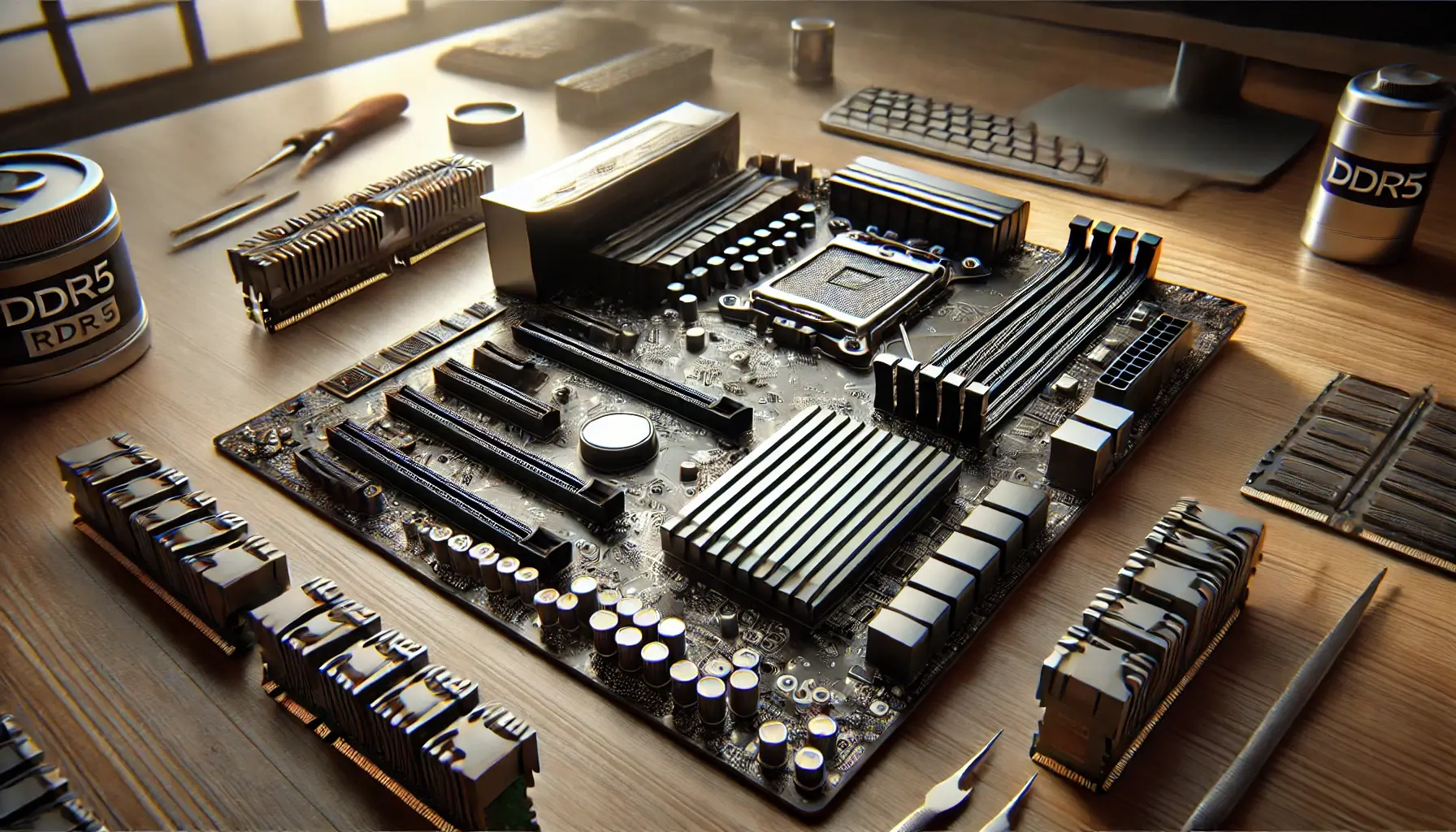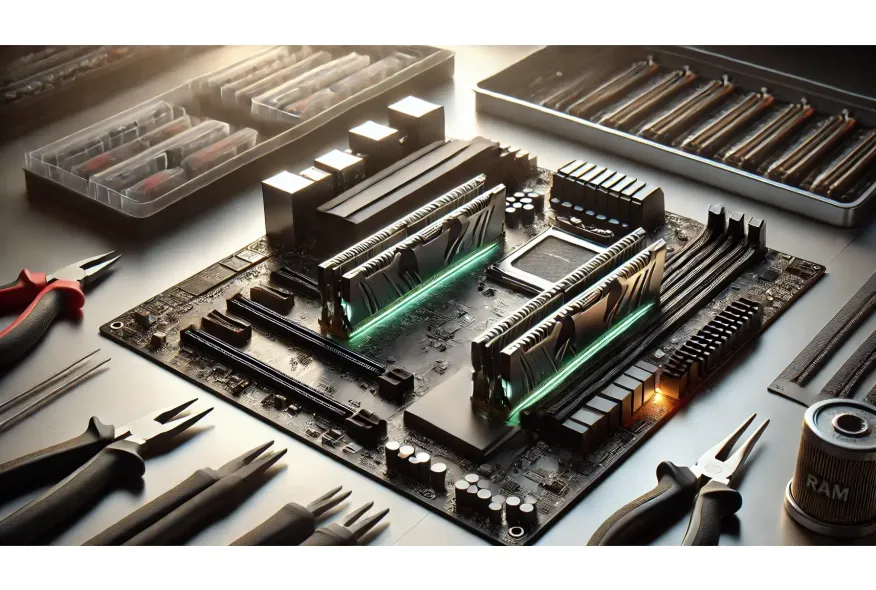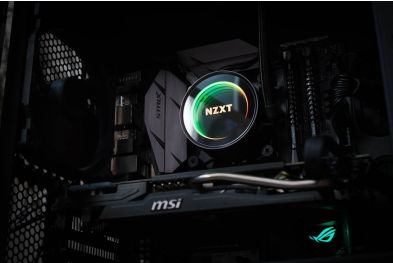What is Dual Channel and Why is it Important?
Understanding Memory Channels in a PC
When building a computer, many people focus on choosing the right CPU, GPU, and storage, but memory (RAM) configuration plays a crucial role in system performance. One of the most important aspects of memory setup is whether your RAM operates in single channel or dual channel mode. But what does that mean, and why does it matter? Let’s break it down.
What is Dual Channel Memory?
Basic Definition
Dual channel memory refers to a memory configuration that allows the motherboard to access two memory modules simultaneously, effectively doubling the memory bandwidth available to the system. This results in faster data transfers between the RAM and the memory controller (which is typically part of the CPU).
How It Works
In a dual channel setup, the motherboard splits memory operations across two channels, each connected to a separate RAM stick. Instead of sending all data through a single pathway, the system can handle twice as much data at once, which boosts overall memory performance.
For this to work, the memory sticks must be installed in specific slots, usually color-coded pairs on the motherboard. If you only install one memory stick, or if you install mismatched memory, the system defaults to single channel mode, cutting memory bandwidth in half.
Key Benefits of Dual Channel Memory
1. Increased Memory Bandwidth
With dual channel enabled, the system can transfer twice the data compared to single channel. This is especially beneficial for memory-intensive tasks such as gaming, video editing, and 3D rendering.
2. Improved Performance in Games and Applications
Modern games, especially open-world and simulation games, rely heavily on memory speed and bandwidth. While the performance boost varies between games, benchmarks consistently show higher minimum frame rates with dual channel memory compared to single channel.
In productivity software like Adobe Premiere, Photoshop, and Blender, faster memory access results in smoother previews, quicker file loads, and better handling of large projects.
3. Better Multitasking
Dual channel memory excels when running multiple programs simultaneously. Whether you’re streaming, gaming, and chatting at the same time or working with large datasets while browsing, dual channel keeps things running smoothly by avoiding memory bottlenecks.
Single Channel vs Dual Channel: Real-World Performance
Gaming Performance
- In CPU-bound games (like strategy games or esports titles), dual channel can improve frame rates by 10-20%.
- In GPU-heavy games, the difference is smaller, but still noticeable in minimum frame rates and stuttering.
Productivity Tasks
- Video editing, 3D modeling, and photo editing see performance gains of up to 30% in certain workflows.
- File transfers, loading large project files, and applying effects all benefit from higher bandwidth.
Everyday Use
- For basic office work, web browsing, and casual tasks, the difference between single and dual channel is less pronounced — but even here, dual channel can improve the overall responsiveness of the system.
How to Enable Dual Channel on Your Motherboard
Check Your Motherboard Manual
Motherboards have paired memory slots designed to work together in dual channel mode. These are often color-coded — for example, slots 1 and 3 might be one pair, and slots 2 and 4 the other.
Install Matching Memory Modules
To enable dual channel, you need two identical RAM sticks — same capacity, speed, and preferably from the same brand and kit. Mismatched memory (different sizes or speeds) can sometimes work in dual channel, but performance may be inconsistent.
Enter the BIOS (Optional)
Most modern motherboards automatically detect dual channel when the memory is installed correctly. However, it’s always a good idea to check your BIOS memory configuration to confirm that dual channel is active.

Does Dual Channel Matter for DDR5 Systems?
With DDR5 memory, dual channel works a bit differently. Each individual DDR5 module (DIMM) contains two independent 32-bit channels, effectively making each stick a mini dual channel setup by itself. This enhances memory bandwidth even further, making proper dual channel configurations even more powerful.
That said, if you install only one stick of DDR5 memory, you lose this extra bandwidth potential, so dual channel is still highly recommended — even with newer hardware.
Common Mistakes to Avoid
1. Installing Memory in the Wrong Slots
If you install your RAM sticks side-by-side (like slots 1 and 2), the motherboard might run them in single channel mode. Always check the manual to find the correct paired slots.
2. Mixing Incompatible Memory
Using RAM sticks with different speeds, capacities, or brands can cause compatibility issues and prevent dual channel from working properly.
3. Assuming Dual Channel is Automatic
While modern systems often detect and enable dual channel automatically, it’s always worth checking in system information tools (like CPU-Z) to confirm that your memory is running in dual channel mode.
Is Dual Channel Worth It?
In 2025, the answer is a resounding yes — especially if you want to maximize your system’s performance for gaming, creative work, or multitasking. Even for budget builds, the cost of two smaller RAM sticks is often the same or only slightly higher than a single larger stick, making dual channel an easy and cost-effective upgrade.
For high-performance systems, whether gaming PCs or workstations, dual channel memory is a must. It delivers better responsiveness, reduces stuttering, and helps unlock the full potential of your CPU and GPU.
Final Thoughts
Dual channel memory is one of those hidden gems in PC building — it’s simple to set up, doesn’t cost much more, but delivers real performance improvements across a wide range of tasks. Whether you’re building your first PC or upgrading an existing one, taking advantage of dual channel memory is one of the smartest performance tweaks you can make.







